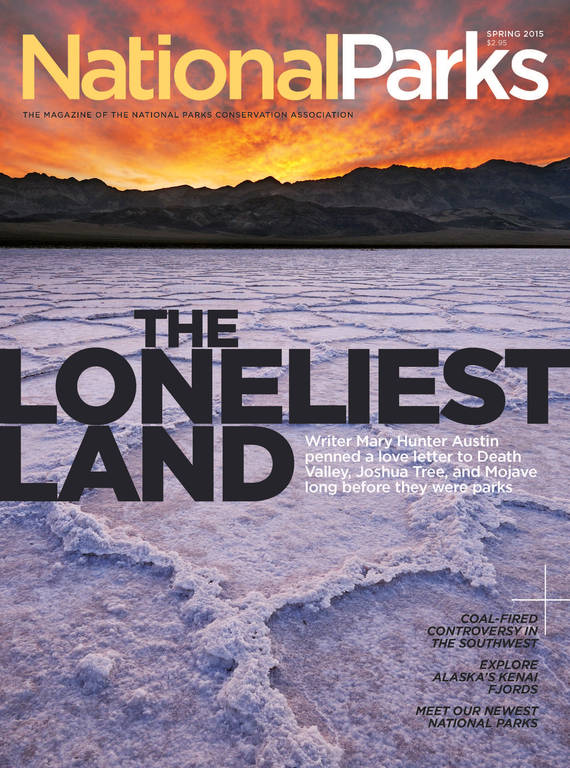Spring 2015
Resurfacing
The U.S. Fish and Wildlife Service is considering taking manatees off the endangered species list. But is it too soon?
What is it about the lumbering, massive manatee that stirs such fervor among its admirers? For some, it begins with the so-called sea cows’ fascinating biology—the creatures seem “jerry-rigged,” as one scientist put it. They share features with a bizarrely broad range of animals from elephants to koalas. They have lungs as long as fishing poles, pass gas to efficiently sink into the water, regenerate teeth throughout their lives, and look like a cross between a sofa and a hippo with flippers.
The largest manatees can grow to be 12 feet long and 3,500 pounds, yet—and this also tends to impress people—they are utterly harmless and even defenseless. One of only two herbivorous marine mammals, they are often referred to as gentle giants for a very good reason.
“They want to look in your eyes like a puppy and occasionally, they’ll even roll over to get their belly rubbed,” says Brandie Wooten, the operations manager of River Ventures, a manatee tour company in Florida. “When you meet one face to face, that feeling you get is phenomenal. It can be transformative…They are loveable, sentient beasts.”
They are also considered endangered—for now. Manatees, once hunted to near extinction, have been on the endangered species list since 1967, but the U.S. Fish and Wildlife Service is considering downlisting the creatures to “threatened.” Nudged by a lawsuit brought by Pacific Legal Foundation, the agency is sifting through the scientific evidence. A decision isn’t expected until later this year, but the mere possibility of a status change troubles manatee advocates.
“It’s biologically and legally premature,” says Patrick Rose, executive director of Save the Manatee Club. “This is just not the time.”
The manatee population has grown to around 5,000, thanks to decades of protection, he says, but the problem is the increasing number of threats in Florida, which is home to most of the country’s manatees. The slow-moving creatures wander as far up the coast as Cape Cod, but they return to the Sunshine State in the winter in search of the warm water. (They can be found in national parks including Biscayne and Everglades, but the largest numbers congregate on Florida’s central eastern and southwest coasts.) Advocates are worried about the deterioration of essential manatee habitats due to climate change and development. They say human population growth is affecting the natural springs the manatees depend on, and the ever-rising number of boats concerns them, too. Watercraft collisions kill manatees every year and are responsible for an untold number of injuries. At some point, most manatees have been hit and scarred, and sometimes, boats leave them horribly mangled. John Reynolds, a scientist at Mote Marine Laboratory and the former chair of the Marine Mammal Commission, once saw a manatee swimming along and eating, though its lungs were hanging out of its back.
Then there’s the matter of algae blooms, which snuff out essential aquatic vegetation and can be fatally toxic. Some blooms are naturally occurring and others have been linked to human activity, but in a couple of cases, there is no clear explanation for the disastrous outbreaks.
In most years, manatee fatalities—caused by anything from cold shock to boats and illness—hover around 400, but in 2013, 830 manatees died, many from either the toxic “red tide” or a mysterious algae bloom in the Indian River Lagoon. In 2010, 766 manatees died in a similar mortality spike.
“They are vulnerable to habitat changes and disease in ways we don’t completely understand,” says Reynolds. “There’s no doubt there are more manatees now than there were 20, 30, 40 years ago, but there are not so many that we can relax.”
Downlisting manatees should not affect existing regulations, which dictate everything from boat speed to dock construction. “You can’t reclassify and take away protections,” says Chuck Underwood, a spokesman at the U.S. Fish and Wildlife Service. “It doesn’t work that way.”
But some manatee supporters aren’t so sure. “People will say, ‘They’re no longer endangered—why do we need these rules?’” says Jaclyn Lopez, Florida director of the Center for Biological Diversity. “It signals that manatees don’t need our help.”
Some Florida residents are already fed up with manatees because of restrictions on boat speed, dock construction, and development, she says. And even under current conditions, she has concerns about the animals’ treatment. In Florida’s Crystal River, where manatee tourism is a huge part of the economy, she objects to sanctioned manatee petting and unchecked crowds. She pointed to a time-lapse video showing crowds crammed into a small area. “The water is cloudy and people are kicking and stepping on the manatees,” she says. “They are clearly distressed because of the volume of people.”
Though many advocates agree that manatee hot spots should be regulated and monitored—in fact, officials are considering tightening the rules in Crystal River National Wildlife Refuge—some are torn about how much to stem the flow of eager visitors whom they see as environmentalists in the making. “There are few things that can help define conservation ethics and values that are more effective than seeing animals in the wild,” says Reynolds.
For this reason, Rose calls manatees the “tugboat species.” He has always felt that the beloved animal could be the slow and steady species that helps lead the way to a cleaner, healthier ecosystem. When sea grass dies, or when natural springs slow to a trickle or become polluted, it affects a host of creatures, including humans, who use the same springs for everything from agriculture to drinking water.
“People have to understand their own quality of life is at risk,” he says. “It’s not just about manatees.”
A Case of Mistaken Identity
As the story goes, Christopher Columbus mistook a group of three manatees for mermaids on his first journey to the Americas. “They are not so beautiful as they are said to be,” he wrote in his journal, “for their faces had some masculine traits.”
About the author
-
 Rona Marech Editor-in-Chief
Rona Marech Editor-in-ChiefRona Marech is the editor-in-chief of National Parks, NPCA’s award-winning magazine. Formerly a staff writer at the Baltimore Sun and the San Francisco Chronicle, Rona joined NPCA in 2013.



